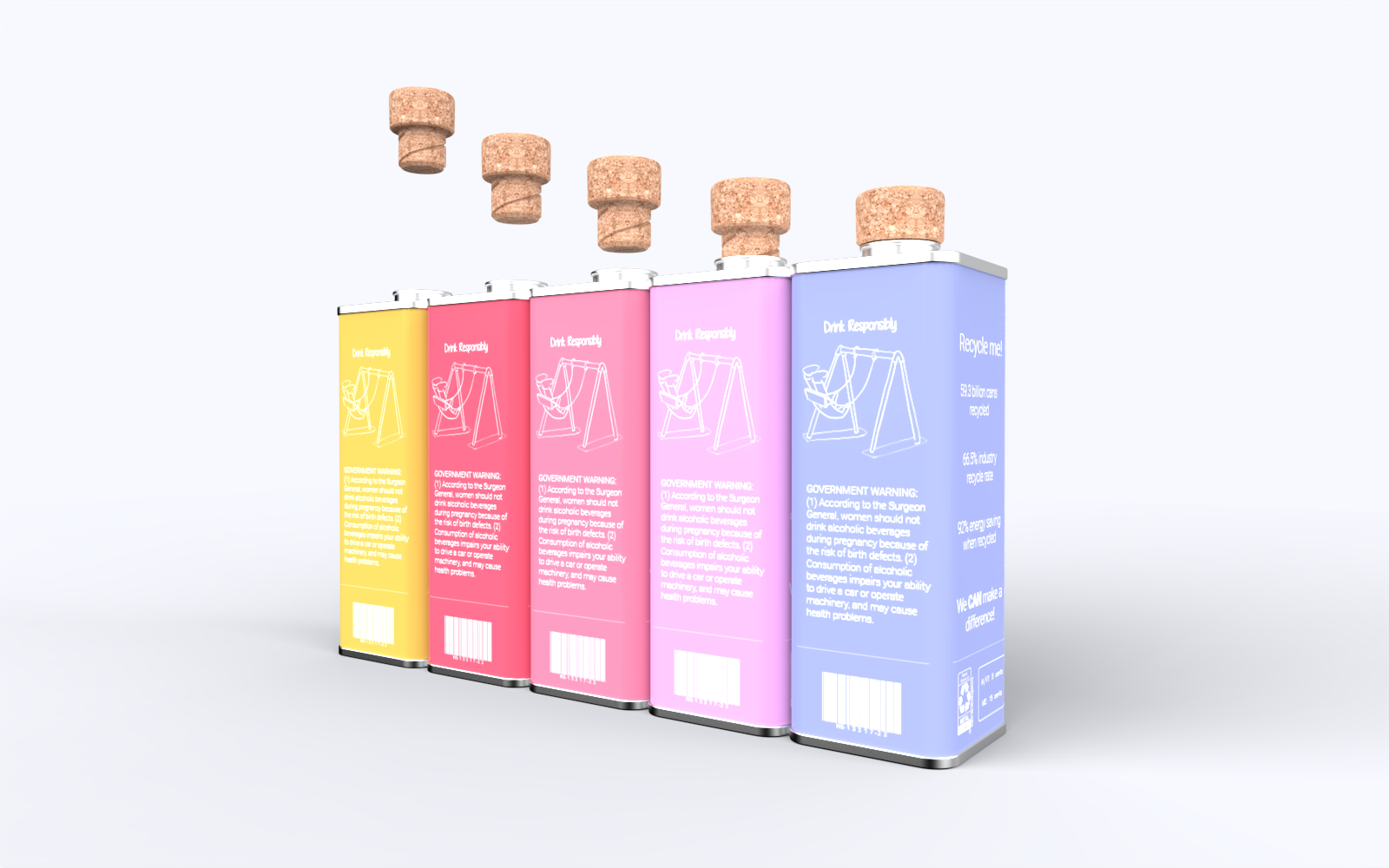Recess 13
Recess 13 is a new sustainable take on wine packaging. It is designed to lean in on the qualities users value and improve where glass bottles lack.
year
2022
timeline
6 weeks
discipline
Industrial Design
Brand Design
Packaging & Display Design
Recess13 is sustainable wine packaging solution that doesn’t lack in perceived value.
Recess13 comes without the limitations of a glass wine bottle, while maintaining the fun tactile experience users desire.
Manufacturing glass requires significant amounts of energy and raw materials, such as sand, soda ash, and limestone. This contributes to carbon emissions and depletes natural resources. Additionally, the weight of glass bottles increases transportation costs and carbon footprint during distribution. While glass is recyclable, only 31% actually gets recycled, and the recycling process itself requires energy and resources.
How can we create an improved modern packaging option for this timeless human experience?
interview highlights
"there is something about uncorking a bottle of wine... it's the way it should be"
Keith Finley
"corks are so great but there is a huge convenience with a screw top"
Monet Goode
"drinking wine is a social experience for me... its at the center of many memories"
Channing Lee
"it should be easier to save wine once you've opened the bottle"
Lydia Brooks
"bottles are terrible to travel with and pack in coolers"
Mark Verduzio
key insights
1
users highly value their wine experience
2
many outdoor event spaces don’t allow glass containers
3
users desire the fun aspect of drinking wine
4
glass wine bottles aren’t ideal for cooler storage
5
convenience can outweigh taste in certain situation
6
although users love glass bottles they feel they aren’t ideal for all scenarios
7
users value corked wine's tactile experience but appreciate resealable options for convenience
8
users are open to alternative packaging options if they improve drinking experience
design goals
Sustainable
material, manufacturing, transportation, & afterlife considerations
Portable
users want to be able to enjoy wine in places glass isn’t an option
Resealable
users enjoy corked wine but want the option to reseal a bottle
Tactile
users value classy tactile experience of opening a bottle of wine
Fun
users desire a fun experience that comes with drinking wine
recycled aluminum
Did you know aluminum is infinitely recyclable and the most abundant material on Earths crust? While energy intensive during extraction and manufacturing, aluminums ability to be endlessly recycled without compromising quality significantly reduces the need for virgin aluminum production. Thus, lessening the environmental impact of mining, and requiring only 5% the energy to produce a recycled can compared to a virgin. When used for beverage containers like cans, aluminum forms a closed loop recycling system that helps conserve recourses and minimize waste. Additionally, the aluminum industry recycles 2 cans for every 3 it produces, leaving 75% if all aluminum produced still in use today.
natural cork
Did you know a cork wine stopper can retain approximately 309 grams of CO2? The process of harvesting cork is both non-destructive and renewable, as the tree's bark regenerates after stripping. This practice not only supports the longevity of the cork ecosystem but also provides economic stability for communities that depend on cork harvesting. Furthermore, cork closures are biodegradable and have a lower carbon footprint compared to alternative closures like plastic or metal. They enable a natural aging process for wines and have been used for centuries due to their reliable sealing properties.
Square form selected to maximize portability, pallet storage, aesthetic appeal, and to provide seamless joyful experience.
functional form
experience
Incorporating fun elements to create rich tactile experience.
Users value tactile uncorking experience but want the ability to reseal. Luckily cork can be molded with a thread using bits of cork, a byproduct of plugged corks.
twist cork
Physical ideation confirmed the design direction and refined elements of product experience, such as: ergonomics, structural integrity, portability, tactility, and usability.



















